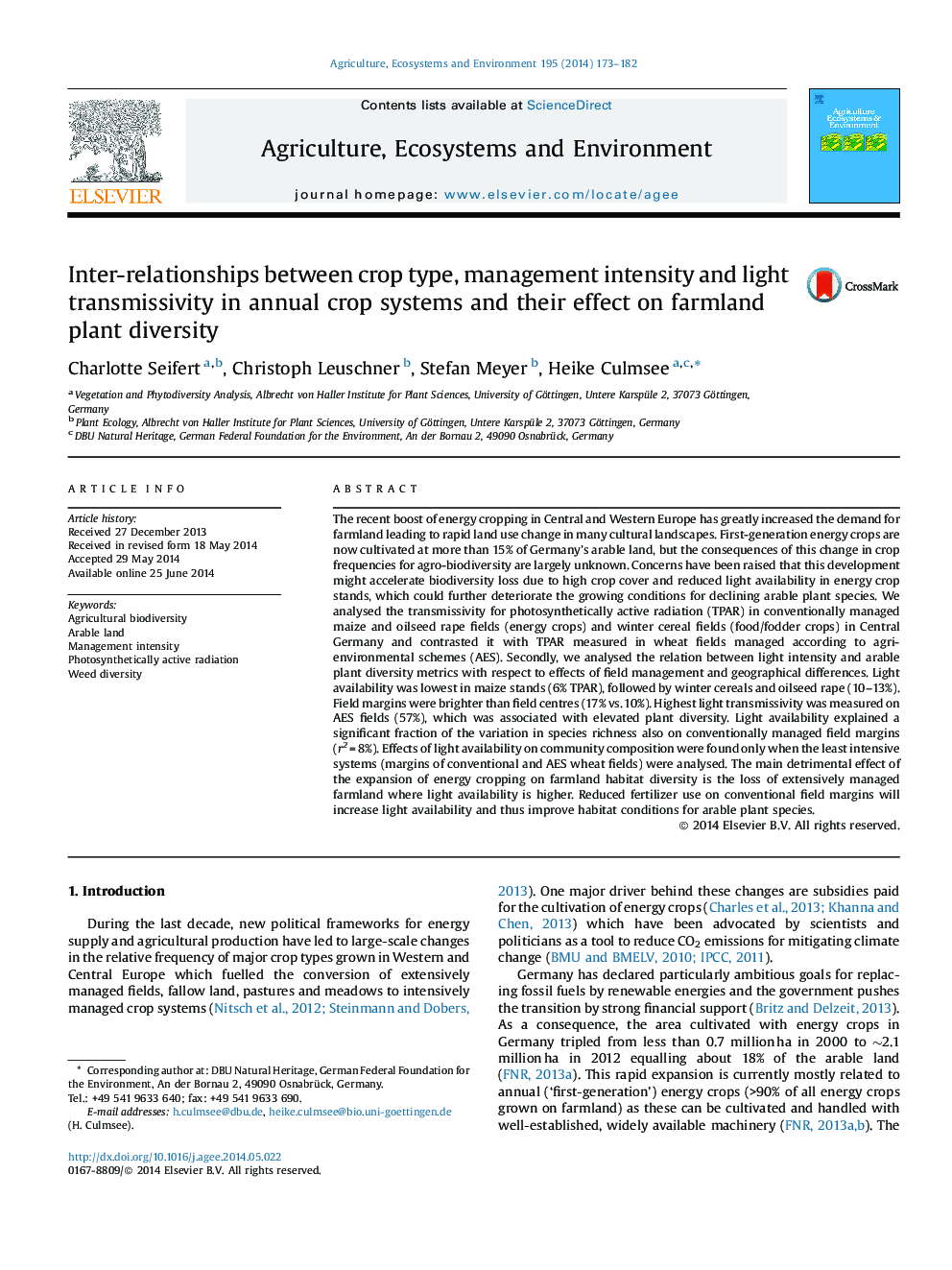| Article ID | Journal | Published Year | Pages | File Type |
|---|---|---|---|---|
| 2413920 | Agriculture, Ecosystems & Environment | 2014 | 10 Pages |
•Variances in light conditions in arable crop stands were related to weed diversity.•Maize stands were darker than oilseed rape and winter cereal stands.•Light availability positively correlated with species richness at field margins.•Conservation headlands provide species rich habitats with variable light regime.
The recent boost of energy cropping in Central and Western Europe has greatly increased the demand for farmland leading to rapid land use change in many cultural landscapes. First-generation energy crops are now cultivated at more than 15% of Germany’s arable land, but the consequences of this change in crop frequencies for agro-biodiversity are largely unknown. Concerns have been raised that this development might accelerate biodiversity loss due to high crop cover and reduced light availability in energy crop stands, which could further deteriorate the growing conditions for declining arable plant species. We analysed the transmissivity for photosynthetically active radiation (TPAR) in conventionally managed maize and oilseed rape fields (energy crops) and winter cereal fields (food/fodder crops) in Central Germany and contrasted it with TPAR measured in wheat fields managed according to agri-environmental schemes (AES). Secondly, we analysed the relation between light intensity and arable plant diversity metrics with respect to effects of field management and geographical differences. Light availability was lowest in maize stands (6% TPAR), followed by winter cereals and oilseed rape (10–13%). Field margins were brighter than field centres (17% vs. 10%). Highest light transmissivity was measured on AES fields (57%), which was associated with elevated plant diversity. Light availability explained a significant fraction of the variation in species richness also on conventionally managed field margins (r2 = 8%). Effects of light availability on community composition were found only when the least intensive systems (margins of conventional and AES wheat fields) were analysed. The main detrimental effect of the expansion of energy cropping on farmland habitat diversity is the loss of extensively managed farmland where light availability is higher. Reduced fertilizer use on conventional field margins will increase light availability and thus improve habitat conditions for arable plant species.
